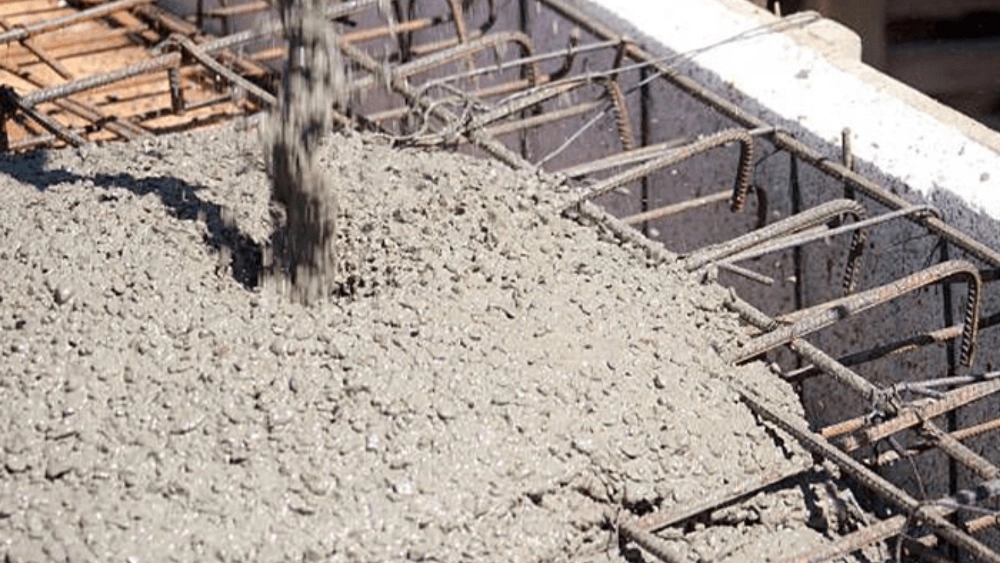Ready concrete is said to be produced in the concrete factory and sent to the concrete site. Ready concrete is usually used for smaller projects. In large projects, the Concrete Central Station is built at the project site to facilitate the production of concrete and concrete production. Ready concrete is made according to the requirements requested by the contractor to resist resistance.
The lower the water than the cement, the greater the strength of the concrete and vice versa. The higher the water, the reduced the ready -made concrete resistance. The price of ready -made concrete is slightly above the conventional concrete made at the project site, but this price increase is offset by saving concrete, concrete supervisor and cement consumed.
Concrete is a type of concrete produced in the factory under controlled conditions and then shipped to the construction project site. This concrete is made from a precise combination of raw materials such as cement, water, sand, sand and chemical additives. The use of ready -made concrete is very common in construction projects due to its uniform quality, reduction of construction time, and increased productivity. This type of concrete is a good and efficient option in the construction industry because of its high variety and adaptability to different needs. The following is a variety of ready -made concrete:
Concrete concrete: This type of concrete is used for general building applications and has standard resistance
Armed Concrete: In this type of concrete, steel bars are placed to increase tensile and bending resistance.
Concrete Style: is manufactured using lighter materials such as mineral shell or foam and used to lose weight of structures. It does not require vibration to place, suitable for sophisticated molds and hard access locations. Used such as bridges and tall buildings.
What is the use of ready -made concrete?

Residential and Commercial Buildings: Concrete Ready is used in the construction of walls, ceilings, columns and panels. The quality and uniformity of this concrete enhances the durability and resistance of the structural structures.
Bridges and tunnels: High strength and excellent mechanical properties of concrete, make it suitable for construction of bridges and tunnels. . This type of concrete can withstand heavy loads and harsh environmental conditions.
Roads and Roads: Concrete Ready -Ready Concrete is used to build road pavements, sidewalks and traffic routes. This concrete has a longer life due to its high resistance to wear and weather conditions.
Water Structures: Concrete ready for dams, canals, water tanks and related structures Water is used. Waterproof additives in ready -made concrete enhances its resistance to water penetration.
Industrial Projects: Concrete ready for the construction of large industrial foundations and structures such as silos, towers and refineries It goes. Becomes.
How prepared concrete mix
ready concrete in accordance with the standards of the National Iranian Standard Organization is produced in the factory and sent to the buyer. Ready concrete is mixed in three forms of mixing and customer supplied to the customer, which we will discuss how to mix the concrete:
• Complete mixing at Central Station: This type of concrete Mixed and used with mixing equipment at the central station is completely mixed and used in accordance with the defined standards of the concrete.
• Unfinished mixing in the central station: in this type of concrete , Mixing at the station The central is done but not completely. The final mixing is in the truck and during shipment and delivered to the concrete site.
• Full mixing in the truck tank of concrete: All mixing process in the truck And it is carried out and ultimately delivered to the development workshops.
The use of ready -made concrete brings with it the advantages and disadvantages below:

The benefits of using ready -made concrete
• Using ready -made concrete causes high quality and reduces concrete changes.
• Suitable for small construction projects that have low or crowded space.
• Mixed trucks that can be separated from grain. They become and prevent reduced concrete efficiency.
• Facilitated the concrete without the need for creation and construction of concrete.
Types of ready -made concrete factories
Wet Ready -Ready Concrete Factory
This factories use a water supply system and have more equipment and machinery, so these factories are larger. Due to the humidity of the concrete and the use of water in this type of concrete, the plant has more output. In these factories, there are mixers between 6 and 8 cubic meters that can mix ready concrete in 45 seconds.
Dry Concrete Factory
These factories provide ready -made concrete and transfer to the mixer. The plastic movement of the concrete inside the mixer makes the concrete well mixed and gives us a mixture.
In the semi -humid concrete factory, the combination of sand, sand, beef and water are mixed, then the sand and slurry are added to the mixer. In these factories, the ready -made concrete loading time is reduced.
Combined Concrete Factory
In these factories, a combination of the system Wet ready concrete factory and dry concrete are used and often produce dry concrete. This type of concrete is suitable for small projects and the capacity of these factories is between 2 and 8 cubic meters.

